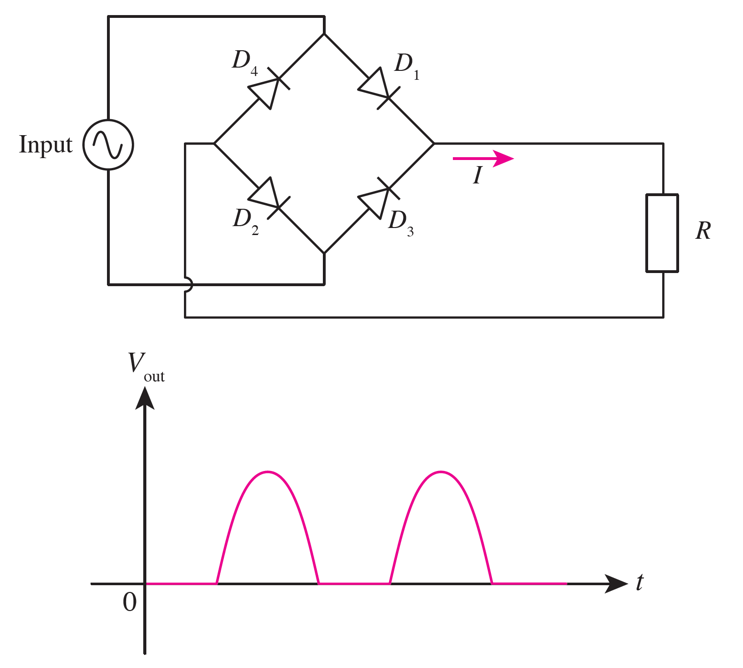Question 1:
What is the meaning of the following terms?
(a) Semiconductor diode
(b) Forward biased
(c) Rectification
Answer:
(a) An electronic component which allows electric current to flow in one direction only.
(b) A situation when the positive terminal of a dry cell is connected to the anode of diode and the negative terminal is connected to the cathode of diode, enabling electric current to flow in a circuit.
(c) Conversion of an alternating current to a direct current.
What is the meaning of the following terms?
(a) Semiconductor diode
(b) Forward biased
(c) Rectification
Answer:
(a) An electronic component which allows electric current to flow in one direction only.
(b) A situation when the positive terminal of a dry cell is connected to the anode of diode and the negative terminal is connected to the cathode of diode, enabling electric current to flow in a circuit.
(c) Conversion of an alternating current to a direct current.
Question 2:
draw a full-wave rectification circuit using four semiconductor diodes. Then, sketch the voltage output displayed on the cathode ray oscilloscope if one of the semiconductor diodes is burnt.
Answer:

draw a full-wave rectification circuit using four semiconductor diodes. Then, sketch the voltage output displayed on the cathode ray oscilloscope if one of the semiconductor diodes is burnt.
Answer:

Question 3:
(a) Name the electronic component that is used to smooth the output current of the full wave rectification circuit.
(b) Explain the working principle of the electronic component in 3(a).
Answer:
(a) Capacitor
(b)
The capacitor is connected in parallel with the load.
When the potential difference increases, the capacitor will be charged and energy is stored in the capacitor.
When the potential difference decreases, the capacitor will be discharged so that the output current does not fall to zero value. The energy stored in the capacitor will maintain the potential difference across the resistor.
From the shape of the smoothed output wave, it shows that the capacitor functions as a current smoother.
(a) Name the electronic component that is used to smooth the output current of the full wave rectification circuit.
(b) Explain the working principle of the electronic component in 3(a).
Answer:
(a) Capacitor
(b)
The capacitor is connected in parallel with the load.
When the potential difference increases, the capacitor will be charged and energy is stored in the capacitor.
When the potential difference decreases, the capacitor will be discharged so that the output current does not fall to zero value. The energy stored in the capacitor will maintain the potential difference across the resistor.
From the shape of the smoothed output wave, it shows that the capacitor functions as a current smoother.
